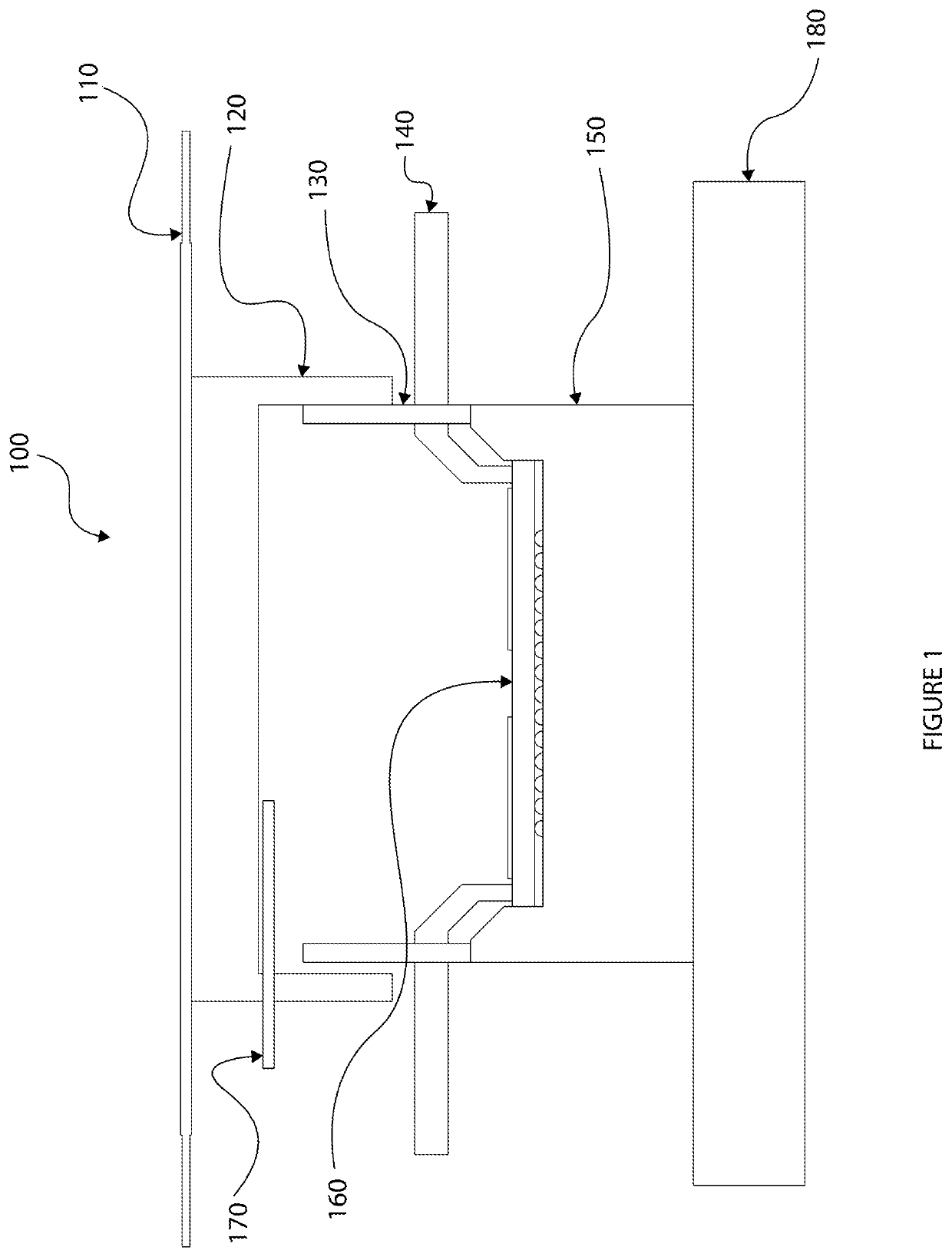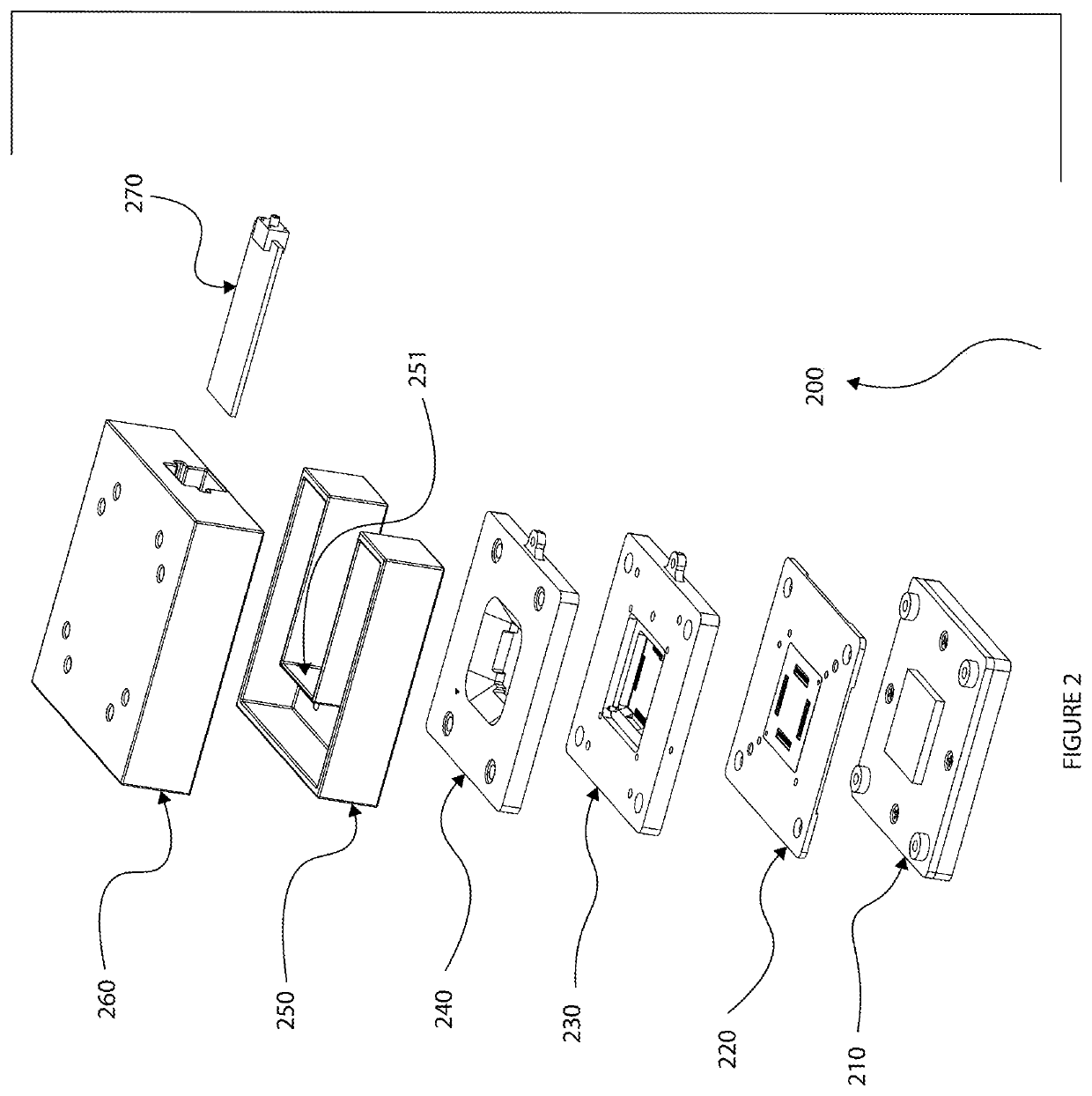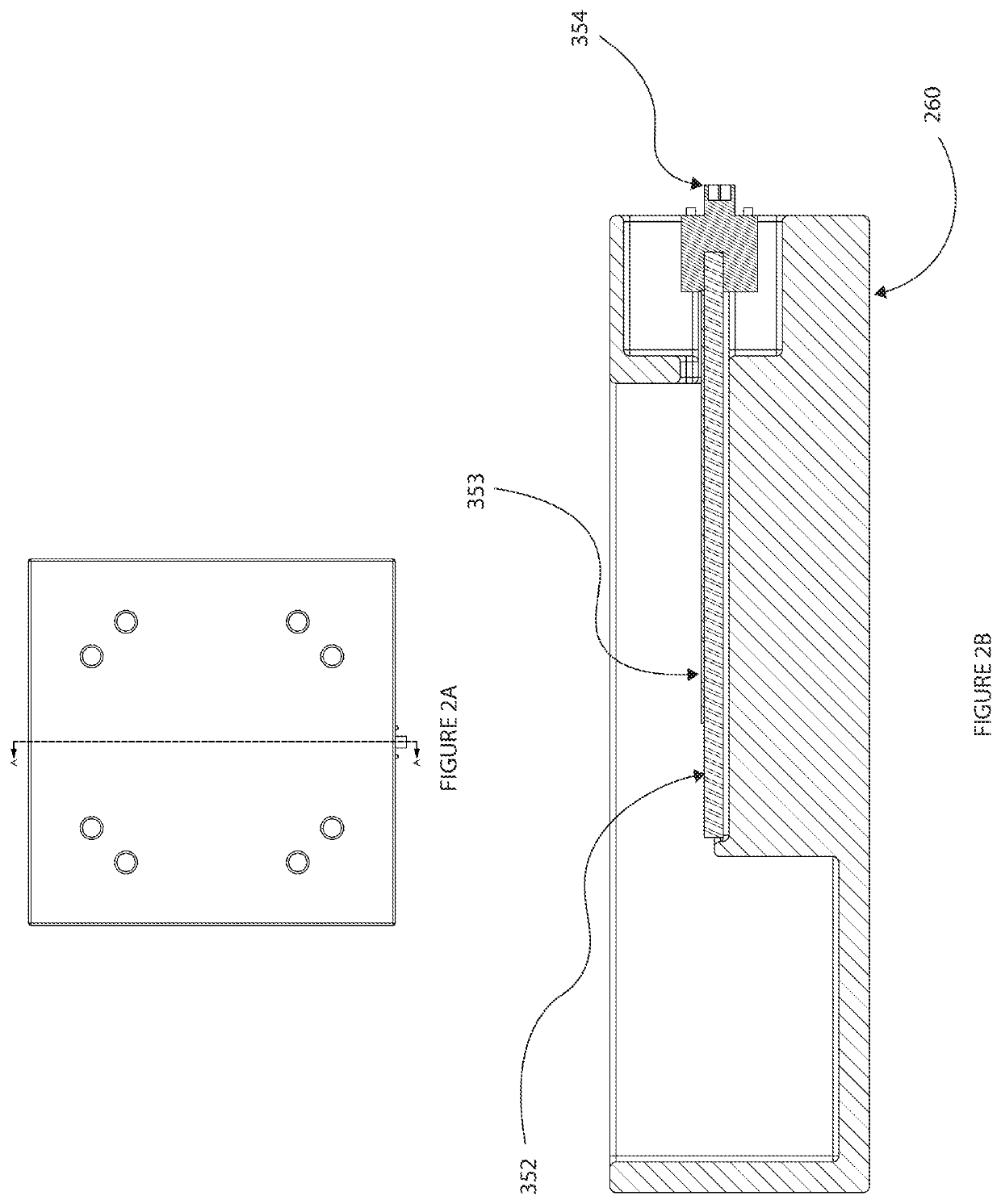Integrated circuit testing for integrated circuits with antennas
a technology of integrated circuits and integrated circuits, which is applied in the direction of measuring devices, protective materials, instruments, etc., can solve the problems of high cost, special problems, and the difficulty of customizing the test setup,
- Summary
- Abstract
- Description
- Claims
- Application Information
AI Technical Summary
Benefits of technology
Problems solved by technology
Method used
Image
Examples
Embodiment Construction
[0025]Some mission critical AiP (antenna in package) chips (such as semiconductor devices and / or integrated circuits (ICs)) may require extensive testing in a chamber (enclosure) because of regulatory requirements. Typically the AiP chip manufacturers may perform rigorous testing at wafer level and perform minimal testing at final OTA test to determine if antenna installation has caused chip damage. The embodiments disclosed herein can facilitate the final OTA testing in an expedient manner in an RF chamber which can save time and reduce the cost of testing.
[0026]Instead of using actual antenna patterns which typically take a long period of time to measure accurately and require large spaces to get measured results in far field of the antenna signals, embodiments disclosed herein are geared towards a final OTA testing where the performance of the RF signals of an antenna is compared to an actual “golden” unit (a unit known to have the exact desired characteristics) or to units that ...
PUM
 Login to View More
Login to View More Abstract
Description
Claims
Application Information
 Login to View More
Login to View More - R&D
- Intellectual Property
- Life Sciences
- Materials
- Tech Scout
- Unparalleled Data Quality
- Higher Quality Content
- 60% Fewer Hallucinations
Browse by: Latest US Patents, China's latest patents, Technical Efficacy Thesaurus, Application Domain, Technology Topic, Popular Technical Reports.
© 2025 PatSnap. All rights reserved.Legal|Privacy policy|Modern Slavery Act Transparency Statement|Sitemap|About US| Contact US: help@patsnap.com



